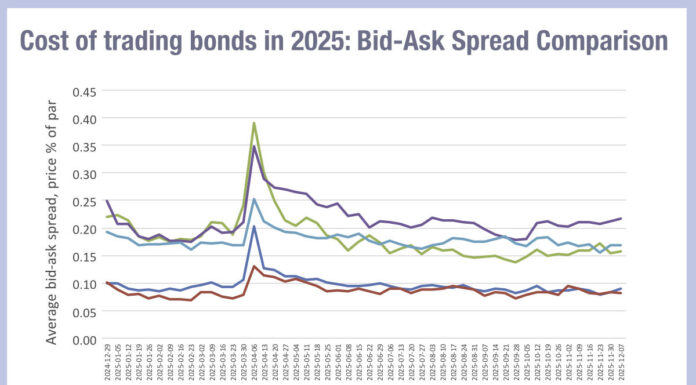Plans for a consolidated tape for fixed income markets in Europe hinge on the “urgent priority” of harmonising post-trade publication windows – keeping them as short as possible – according to Tilman Lueder, head of securities markets, European Commission.
Lueder addressed the Fixed Income Leaders Summit 2022 in Nice remotely, via video link from Brussels, where he said the European energy crisis required “all hands on deck”.
“The harmonisation of post trade publication windows, deferrals as we call them, are the crucial area to be tackled to have meaningful market data consolidation in a consolidated tape for bonds,” said Lueder.
“That’s now the priority of the consolidated tape, which is most promising and most urgent,” he said.
The Commission’s “ambitious” proposals for a ticker tape system were tabled on 23 November last year, he noted. With negotiations “in full swing”, he was downbeat about the extent to which those proposals have already been diluted.
“We’ve lost considerable ground on the windows in Council negotiations and are concerned that deferrals don’t get too long,” said Lueder.
The issue will not be resolved at European Council level until early next year at the earliest, he noted.
“We do not believe they will be resolved by the end of this year. Therefore, they will fall to Swedish Presidency of the European Union in 2023,” he added.
The Commission’s proposals divide trades by size as well as liquid or illiquid. Not every bond is fungible with other bonds, between small and large issues, and across more or less liquid markets.
Deferral windows for releasing pricing in its initial proposal included real-time publication for small trades, judged to be up to €3m for high yield or €5m for investment grade bonds. However, this has now been pushed back to 15 minutes.
Medium-sized liquid trades would have a 15-minute window, which was originally the same for medium illiquid, but this has now been pushed back to end-of-day.
Larger trades would have an end-of-day limit by original proposals, but according to watered down proposals, now range from between two days and four weeks.
On the current trajectory, I’m interested to know when they become commercially meaningless,” Lueder said.
He emphasised the importance of larger trades and setting ambitious but realistic windows for them. The same principles – issues around transparency and illiquidity – are key to the energy crisis, he suggested.
“People try to bluff you and say 80% of trades are published live, but large liquid are commercially the most relevant and large illiquid trades are also very relevant,” said Lueder.
“You can’t judge this market by looking at small retail trades. You need to look at the big boys’ trading prices to get a feel of where the market is heading,” he added.
Lueder was positive about the importance of indicative quotes in knowing where pricing was headed. He said in Europe their role had been talked down as unreliable.
“We see the opposite picture in the US, where large trading houses use indicative quotes that are seen as reliable, to give a better picture of where the market is developing than a two-plus-day-old trade.
“We believe that transactions have to be published within an ambitious time scale and that there is room for indicative quotes,” Lueder added.
©Markets Media Europe 2022
©Markets Media Europe 2025













